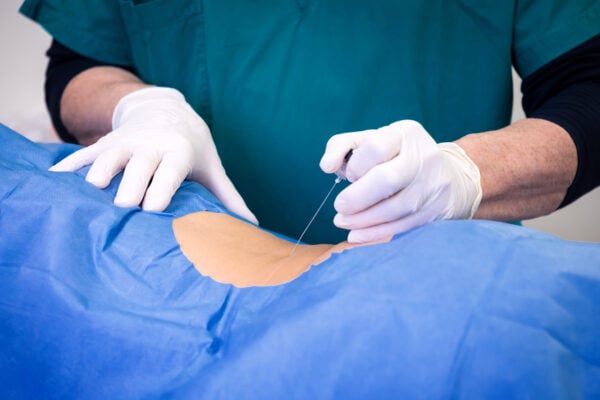In: Medical Imaging

Malone researchers poised to create transformative technologies
Malone researchers are part of two of the four boundary-pushing proposals funded in this year’s cycle of the SURPASS initiative.

New wearable augmented reality device could improve accuracy of spinal tap procedures
- October 3, 2024
- Medical ImagingRobotics, Augmented Reality, and Devices
Johns Hopkins researchers partnered with a local imaging device company to develop an efficient, real-time lumbar puncture guidance system.

Hopkins team awarded up to $20.9 million in ARPA-H funding to further tumor-removal research
- August 20, 2024
- Center NewsMedical Imaging
A Johns Hopkins-led interinstitutional research team will develop a novel photoacoustic endoscope and fluorescent contrast agent to ensure total tumor removal and preservation of healthy tissue.

Delivering on the promise of personalized medicine
- June 11, 2024
- Center NewsMedical Imaging
Harnessing advances in data science and AI, Whiting School researchers are working closely with clinicians to improve care for a broad array of debilitating conditions.

AI can now detect COVID-19 in lung ultrasound images
An automated detection tool developed by Johns Hopkins researchers could help ER doctors diagnose patients quickly and accurately.

Optica elects Muyinatu A. Lediju Bell as 2024 Fellow for innovations in photoacoustic imaging
- December 19, 2023
- Center NewsMedical Imaging
The award acknowledges her pioneering contributions to photoacoustic imaging techniques and their applications for surgical guidance.